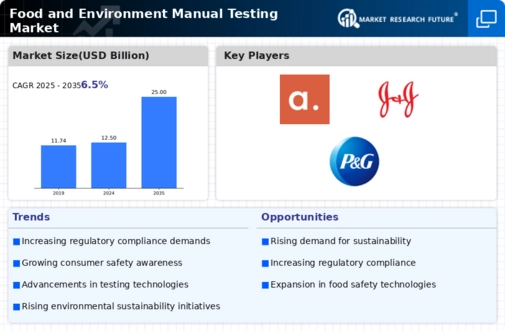Food and Environment Manual Testing Market Summary
As per Market Research Future Analysis, the Global Food and Environment Manual Testing Market was valued at USD XX Billion in 2022 and is projected to grow from USD XX Billion in 2023 to USD XX Billion by 2032, with a CAGR of 8.60% during the forecast period. Key drivers include government measures for food safety and rising consumer awareness. The market is significantly influenced by the increasing number of food recalls, emphasizing the importance of food testing to ensure safety and quality. Advanced technologies, such as DNA-based testing, are enhancing testing accuracy and speed, further propelling market growth.
Key Market Trends & Highlights
The Food and Environment Manual Testing market is witnessing significant growth driven by various factors.
- Market CAGR of 8.60% from 2023 to 2032.
- Photometers segment dominated the market due to extensive use in food and environmental testing.
- Benchtop devices generated the most revenue, primarily used in laboratory research.
- Environment testing segment led the market, driven by government safety regulations.
Market Size & Forecast
| 2022 Market Size | USD XX Billion |
| 2032 Market Size | USD XX Billion |
| CAGR | 8.60% |
Major Players
Key players include Xylem, Merck KGaA, Hach, Hanna Instruments, and Horiba, Ltd.















Leave a Comment